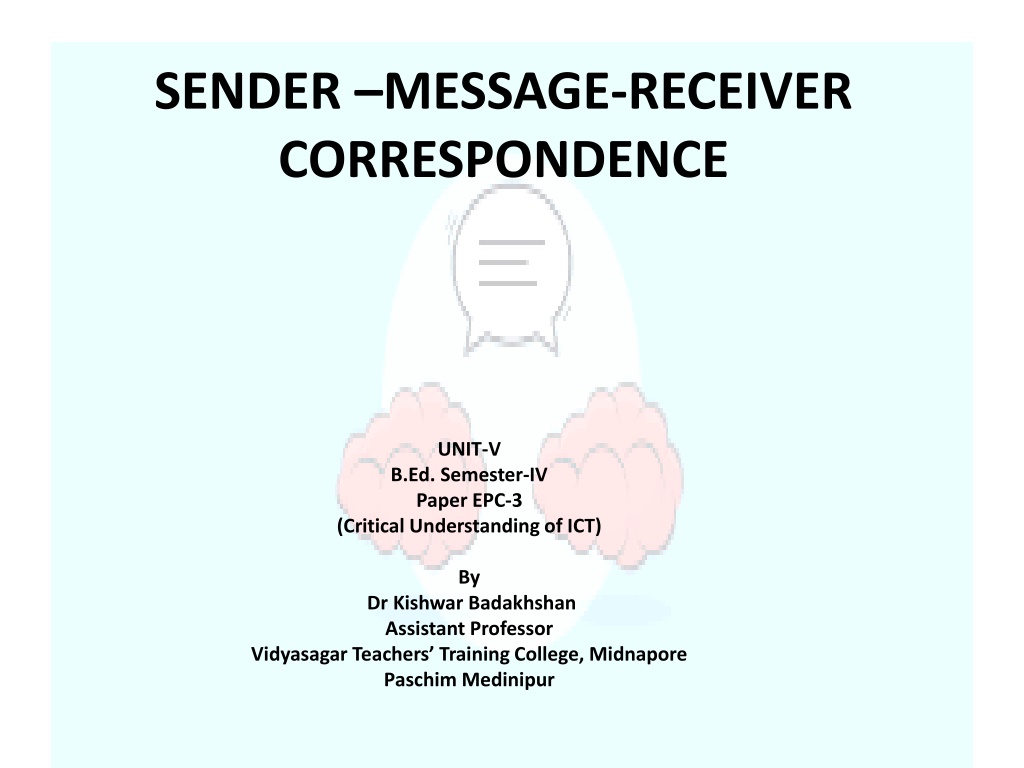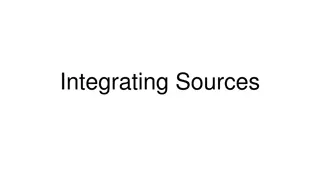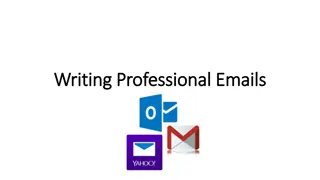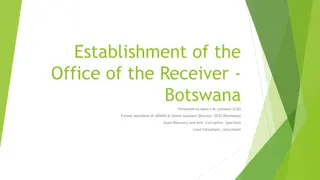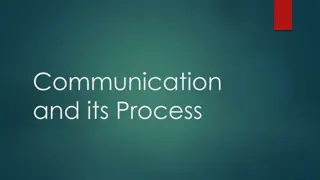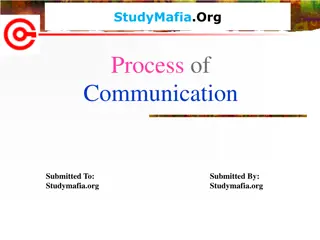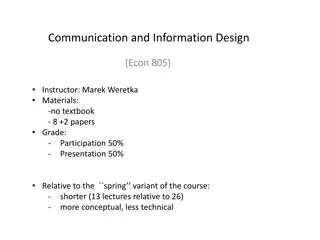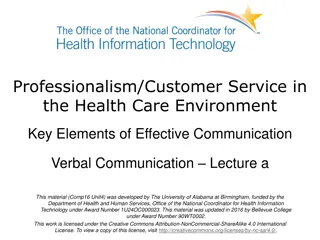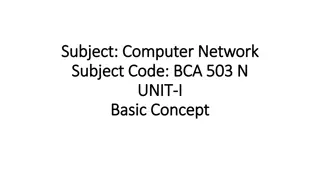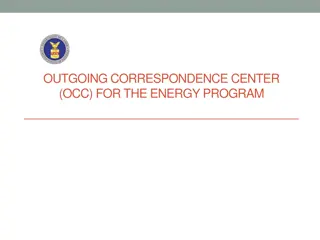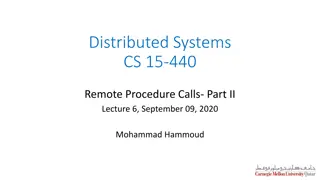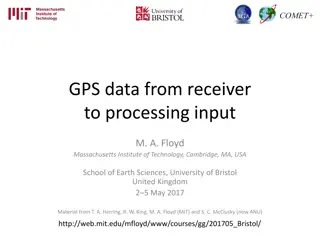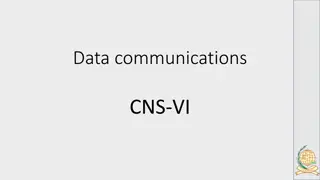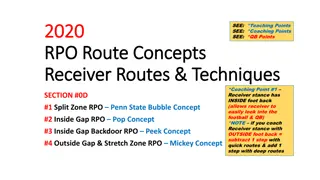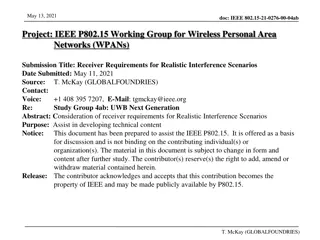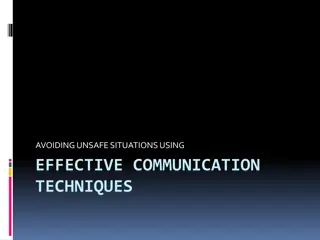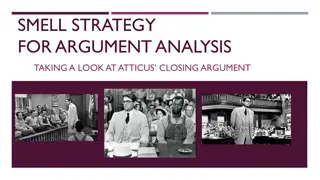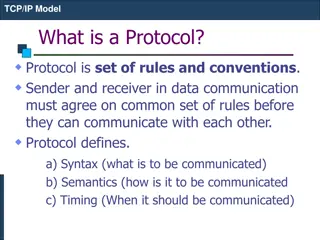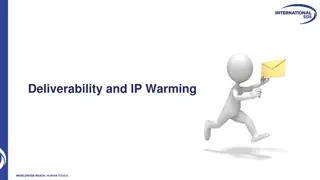Understanding Sender, Message, Receiver Correspondence in Communication Process
Communication process involves sender, message, and receiver elements. The sender initiates communication, generates a message, and conveys it to the receiver. The message is encoded, transmitted through a channel, and decoded by the receiver. Noise can hinder the communication process by interfering with message reception. Understanding these elements is essential for effective communication.
Download Presentation

Please find below an Image/Link to download the presentation.
The content on the website is provided AS IS for your information and personal use only. It may not be sold, licensed, or shared on other websites without obtaining consent from the author. Download presentation by click this link. If you encounter any issues during the download, it is possible that the publisher has removed the file from their server.
E N D
Presentation Transcript
SENDER MESSAGE-RECEIVER CORRESPONDENCE UNIT-V B.Ed. Semester-IV Paper EPC-3 (Critical Understanding of ICT) By Dr Kishwar Badakhshan Assistant Professor Vidyasagar Teachers Training College, Midnapore Paschim Medinipur
SENDER MESSAGE-RECEIVER CORRESPONDENCE It actually refers to communication process which involves three message and receiver. elements- sender,
COMMUNICATION PROCESS SENDER ENCODING MESSAGE NOISE FEEDBACK (BARRIERS TO COMMUNICATION) CHANNEL RECEIVER DECODING
WHO IS A SENDER? The sender is the one who initiates the communication process. He generates the message and conveys it to the receiver. He is the source of communication process. The sender can either be an individual or a group or an organization who wants to communicate. The sender s experiences, attitude, knowledge, skill perception and culture influence the message.
WHAT IS A MESSAGE? It is the idea, information, view fact, feeling that is generated by the sender and is then intended to be communicated to the receiver.
WHAT IS ENCODING? The message generated by the sender is encoded symbolically such as in the form of words, pictures, gestures etc. before it is being conveyed.
WHAT IS CHANNEL? It is the manner in which the encoded message is transmitted. The message may be transmitted orally or in writing. The choice of the medium is decided by the sender. If a sender selects an inappropriate channel the message will be hindered.
WHAT IS DECODING? It is the process of converting the symbols encoded by the sender. After decoding the message is received by the receiver.
WHAT IS NOISE? It is to be noted that throughout the communication process the message is subject to noise which refers to factors that can distort or interfere with adequate reception or comprehension of message. They can be also referred as barriers to communication process.
WHO IS A RECEIVER? It is the person who is last in the chain and for whom the message was sent by the sender. Once the receiver receives the message and understands it in proper perspective and acts according to the message, only then the purpose of the communication is successful.
WHAT IS FEEDBACK? The receiver confirms to the sender that he has received the message and comprehended it. It is a signal to understand that communication process is complete.
References Lunenburg, F. C. (2010). Communication: The process, barriers, and improving effectiveness. Schooling, 1(1), 1-10. Ondondo, E. A. (2015). Acquired language disorders as barriers to effective communication. Theory and Practice in Language Studies, 5(7), 1324-1329. Ruben, B. D., Stewart, L., & Householder, B. J. (1984). Communication and human behavior. New York: Macmillan.
For any suggestions and feedback write to jazzyrasool@gmail.com or call at 9474413909
